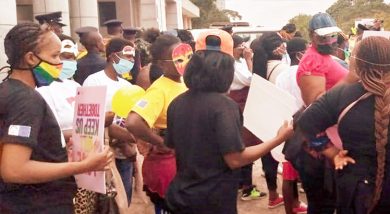Public debt pressure mounts on budget
Ministry of Finance says it is working on strategies to deal with rising public debt amid increasing pressure on the fiscal plan.
Treasury’s move comes in the wake of an analysis by Business Insider, an American financial and business news website, indicating that Malawi alongside 33 other African economies is on the World Bank and International Monetary Fund’s (IMF) heavily indebted countries’ list.
In an interview yesterday, Ministry of Finance spokesperson Williams Banda said, among others, the ministry is developing strategies to improve domestic revenue collection and also focusing more on concessional loans.

He said: “The issue of debt levels is well known and government is putting up strategies to deal with the debt
“Among them, we are coming up with robust domestic revenue mobilisation strategies and use of concessional loans.”
Africa’s heavily indebted poor countries include Ghana, Tanzania, Ethiopia, Benin, Burkina Faso, Burundi, Cameroon, Central African Republic, Chad, Comoros Islands, Democratic Republic of Congo and Republic of Congo.
Others are Ivory Coast, Eritrea, Ethiopia, The Gambia, Guinea, Guinea-Bissau, Liberia, Madagascar, Mali, Mauritania, Mozambique, Niger, Rwanda, Sao Tome and Principe, Senegal, Sierra Leone, Somalia, Sudan, Tanzania, Togo, Uganda and Zambia.
The heavily indebted poor countries’ list is a joint initiative by the World Bank and IMF launched in 1996.
IMF fact sheet indicates that the aim of the initiative is to ensure that no poor country in the world ever faces a debt burden it cannot manage.
This debt relief initiative works in such a way that multilateral financial organisations work in partnership with governments across the world to lower external debts of impoverished countries to sustainable levels.
However, being poor is not the only eligibility criteria to be admitted on the heavily indebted poor countries’ list, according to the IMF.
There are a number of other requirements, including an established track record of capability to grow out of poverty overtime, eligibility to borrow from the World Bank’s International Development Agency, an unsustainable debt burden that cannot be addressed through traditional debt relief mechanisms and an established track record of development reforms and sound policies.
Given a widening fiscal deficit, the stock of public debt has continued to increase, largely driven by high cost domestic debt.
The fiscal deficit is widening due to a slowdown in revenue collection because of the the effects of the Covid-19 pandemic combined with increasing spending pressures, including from the response to the Covid-19 pandemic, debt service costs and unbudgeted arrears.
A recent debt analysis jointly done by the World Bank and IMF in the context of the September 2020 request for emergency financing under the IMF’s Rapid Credit Facility showed that Malawi’s external debt portfolio faces a moderate risk of external debt distress with limited space to absorb shocks as it is highly vulnerable to export-related shocks.
Reads the analysis in part: “The capacity to absorb export-related shocks is expected to deteriorate further because of the slow export recovery in the wake of the Covid-19 pandemic.
“Considering domestic debt, however, the country faces a high risk of debt distress.”
Treasury figures show that Malawi’s external debt soared from $2.42 billion (about K1.97 trillion) to $2.94 billion (about K2.39 trillion) in 2020.
Figures from the IMF also project that the public debt is expected to grow to 78.2 percent of the gross domestic product (GDP) by close of 2021 before climbing further to 81.3 percent of GDP in 2022 and 83 percent in 2023.
In 2006, Malawi had 90 percent or $2.6 billion (about K2.1 trillion) of its $3 billion (about K2.4 trillion) foreign debt written off by international lenders under the Heavily Indebted Poor Countries initiative.





